6. Logistics Information Systems 1. 1. Introduction

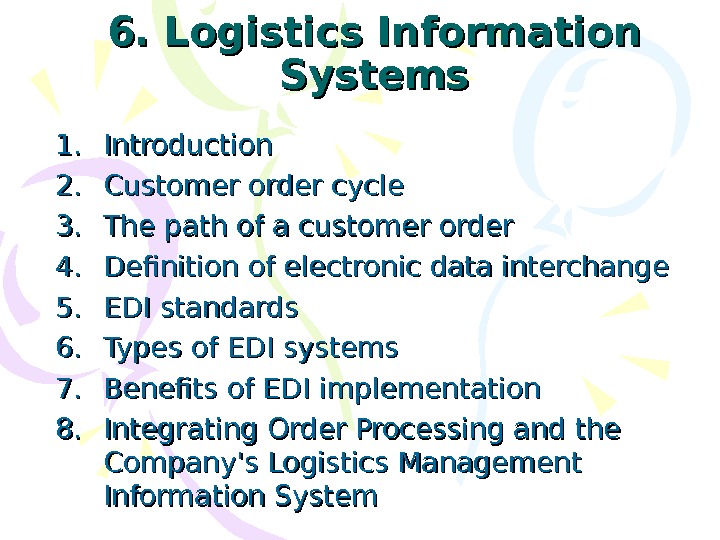
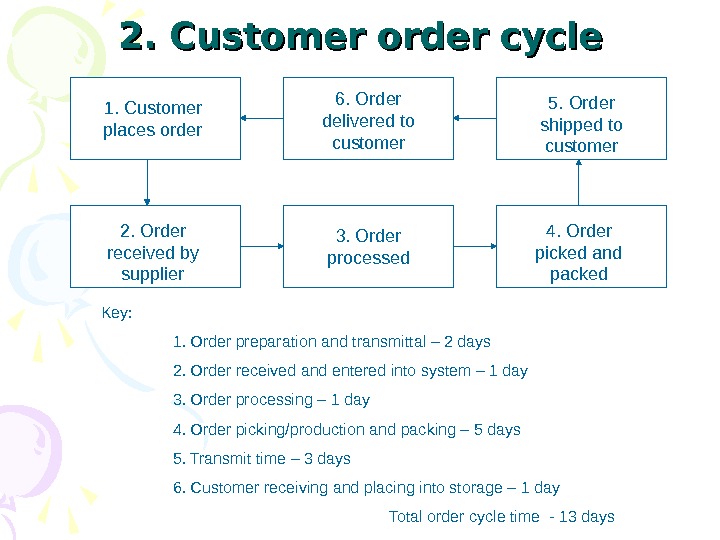
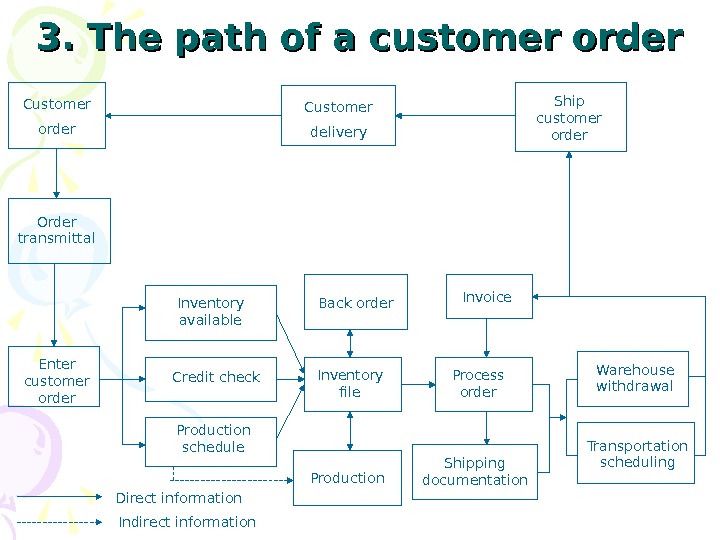
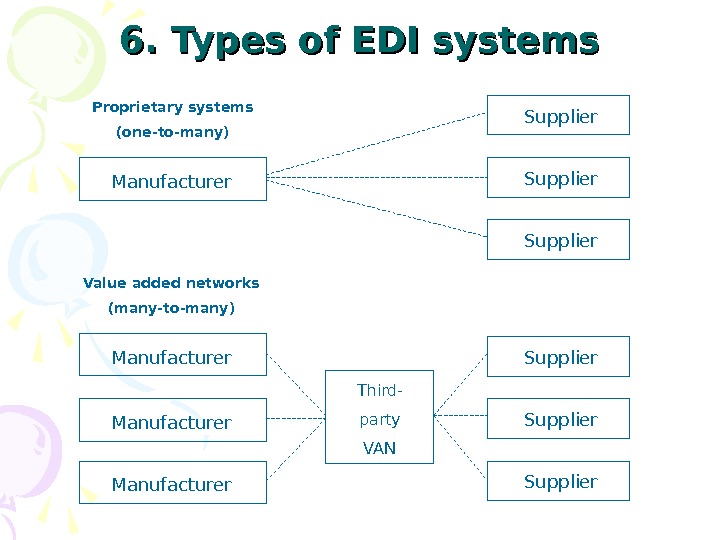
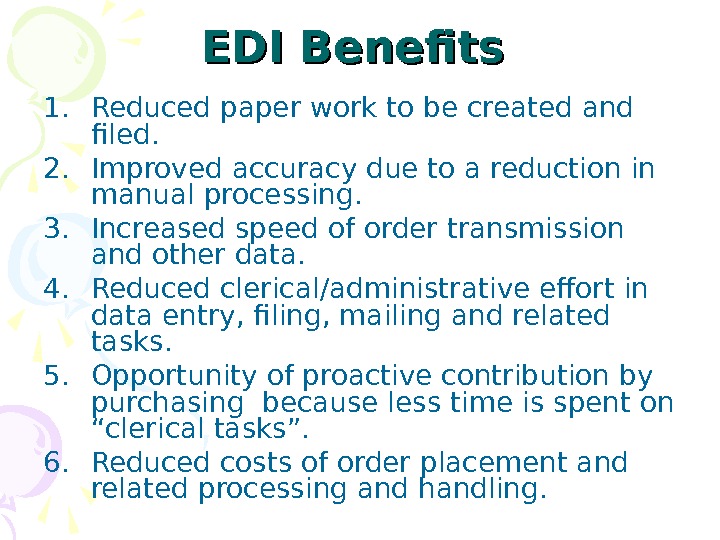
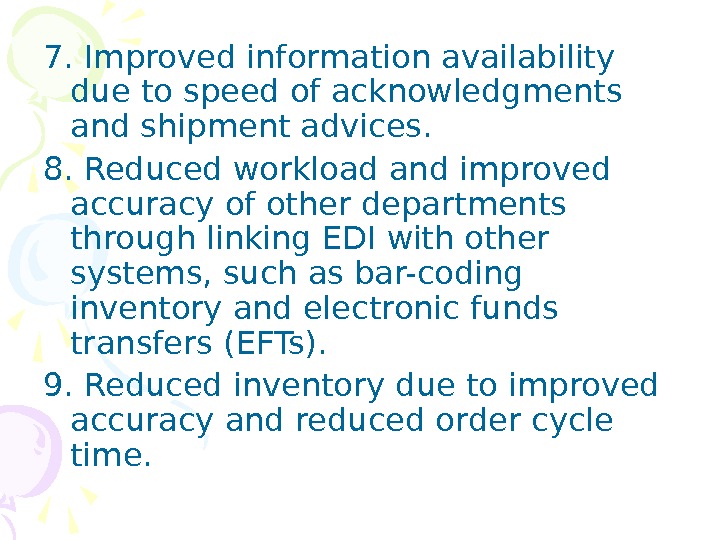
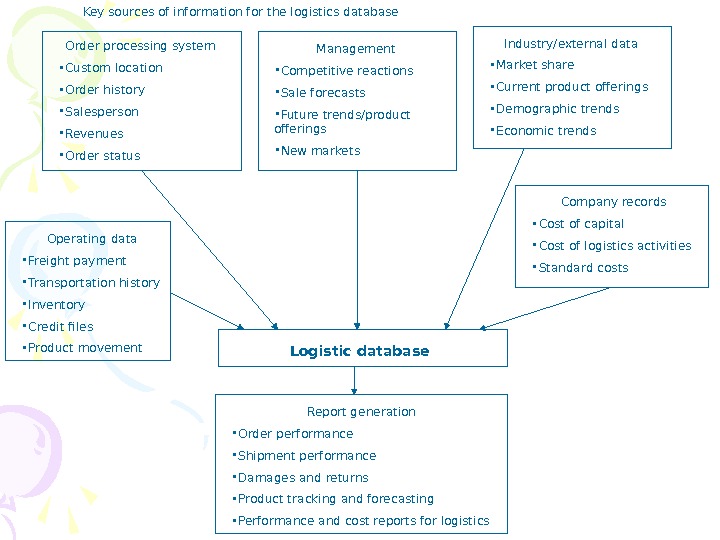
- Размер: 112.5 Кб
- Количество слайдов: 7
Описание презентации 6. Logistics Information Systems 1. 1. Introduction по слайдам
 6. Logistics Information Systems 1. 1. Introduction 2. 2. Customer order cycle 3. 3. The path of a customer order 4. 4. Definition of electronic data interchange 5. 5. EDI standards 6. 6. Types of EDI systems 7. 7. Benefits of EDI implementation 8. 8. Integrating Order Processing and the Company’s Logistics Management Information System
6. Logistics Information Systems 1. 1. Introduction 2. 2. Customer order cycle 3. 3. The path of a customer order 4. 4. Definition of electronic data interchange 5. 5. EDI standards 6. 6. Types of EDI systems 7. 7. Benefits of EDI implementation 8. 8. Integrating Order Processing and the Company’s Logistics Management Information System
 2. Customer order cycle 1. Customer places order 6. Order delivered to customer 5. Order shipped to customer 2. Order received by supplier 3. Order processed 4. Order picked and packed Key: 1. Order preparation and transmittal – 2 days 2. Order received and entered into system – 1 day 3. Order processing – 1 day 4. Order picking/production and packing – 5 days 5. Transmit time – 3 days 6. Customer receiving and placing into storage – 1 day Total order cycle time — 13 days
2. Customer order cycle 1. Customer places order 6. Order delivered to customer 5. Order shipped to customer 2. Order received by supplier 3. Order processed 4. Order picked and packed Key: 1. Order preparation and transmittal – 2 days 2. Order received and entered into system – 1 day 3. Order processing – 1 day 4. Order picking/production and packing – 5 days 5. Transmit time – 3 days 6. Customer receiving and placing into storage – 1 day Total order cycle time — 13 days
 3. The path of a customer order Customer delivery Ship customer order. Customer order Order transmittal Enter customer order Inventory available Credit check Production schedule Back order Inventory file Production Invoice Process order Shipping documentation Warehouse withdrawal Transportation scheduling Direct information Indirect information
3. The path of a customer order Customer delivery Ship customer order. Customer order Order transmittal Enter customer order Inventory available Credit check Production schedule Back order Inventory file Production Invoice Process order Shipping documentation Warehouse withdrawal Transportation scheduling Direct information Indirect information
 6. Types of EDI systems Manufacturer Supplier Supplier. Manufacturer Third- party VANProprietary systems (one-to-many) Value added networks (many-to-many)
6. Types of EDI systems Manufacturer Supplier Supplier. Manufacturer Third- party VANProprietary systems (one-to-many) Value added networks (many-to-many)
 EDI Benefits 1. Reduced paper work to be created and filed. 2. Improved accuracy due to a reduction in manual processing. 3. Increased speed of order transmission and other data. 4. Reduced clerical/administrative effort in data entry, filing, mailing and related tasks. 5. Opportunity of proactive contribution by purchasing because less time is spent on “clerical tasks”. 6. Reduced costs of order placement and related processing and handling.
EDI Benefits 1. Reduced paper work to be created and filed. 2. Improved accuracy due to a reduction in manual processing. 3. Increased speed of order transmission and other data. 4. Reduced clerical/administrative effort in data entry, filing, mailing and related tasks. 5. Opportunity of proactive contribution by purchasing because less time is spent on “clerical tasks”. 6. Reduced costs of order placement and related processing and handling.
 7. Improved information availability due to speed of acknowledgments and shipment advices. 8. Reduced workload and improved accuracy of other departments through linking EDI with other systems, such as bar-coding inventory and electronic funds transfers (EFTs). 9. Reduced inventory due to improved accuracy and reduced order cycle time.
7. Improved information availability due to speed of acknowledgments and shipment advices. 8. Reduced workload and improved accuracy of other departments through linking EDI with other systems, such as bar-coding inventory and electronic funds transfers (EFTs). 9. Reduced inventory due to improved accuracy and reduced order cycle time.
 Industry/external data • Market share • Current product offerings • Demographic trends • Economic trends. Order processing system • Custom location • Order history • Salesperson • Revenues • Order status Management • Competitive reactions • Sale forecasts • Future trends/product offerings • New markets Company records • Cost of capital • Cost of logistics activities • Standard costs. Operating data • Freight payment • Transportation history • Inventory • Credit files • Product movement Report generation • Order performance • Shipment performance • Damages and returns • Product tracking and forecasting • Performance and cost reports for logistics Logistic database. Key sources of information for the logistics database
Industry/external data • Market share • Current product offerings • Demographic trends • Economic trends. Order processing system • Custom location • Order history • Salesperson • Revenues • Order status Management • Competitive reactions • Sale forecasts • Future trends/product offerings • New markets Company records • Cost of capital • Cost of logistics activities • Standard costs. Operating data • Freight payment • Transportation history • Inventory • Credit files • Product movement Report generation • Order performance • Shipment performance • Damages and returns • Product tracking and forecasting • Performance and cost reports for logistics Logistic database. Key sources of information for the logistics database

